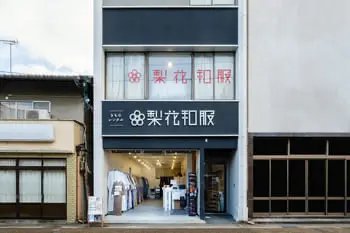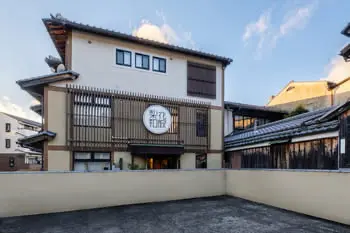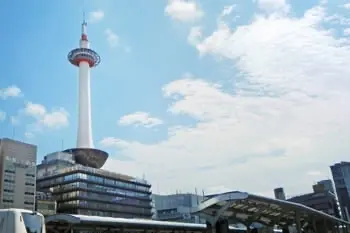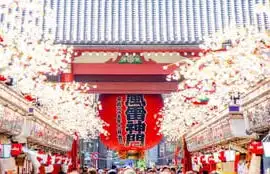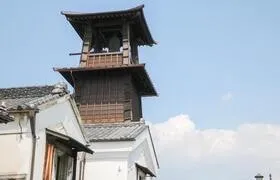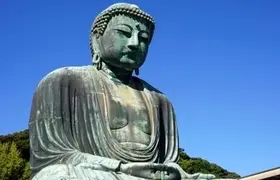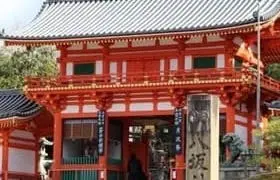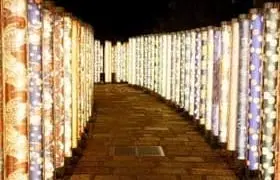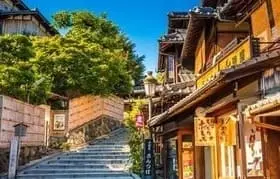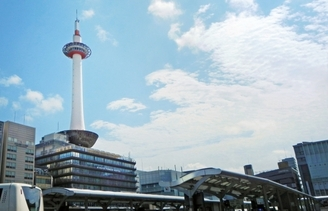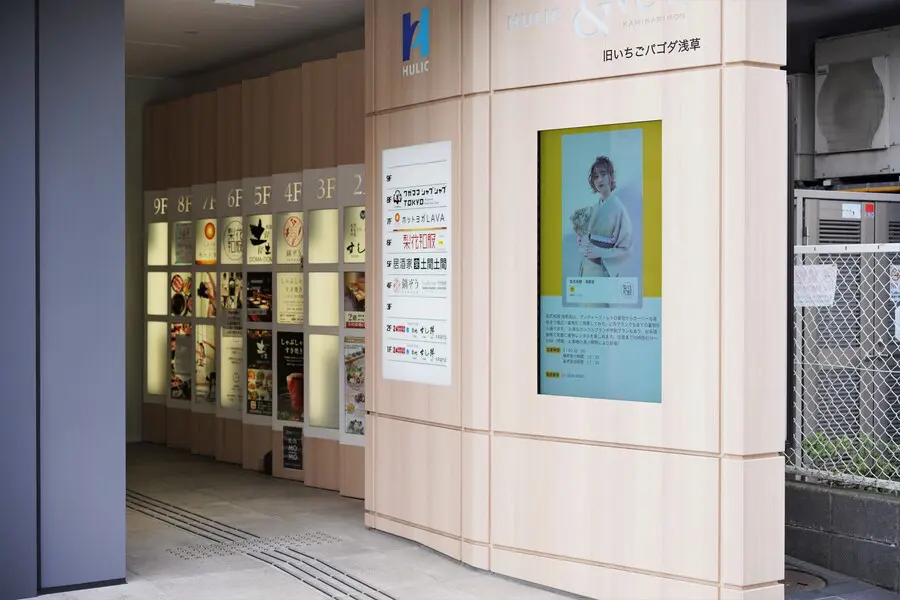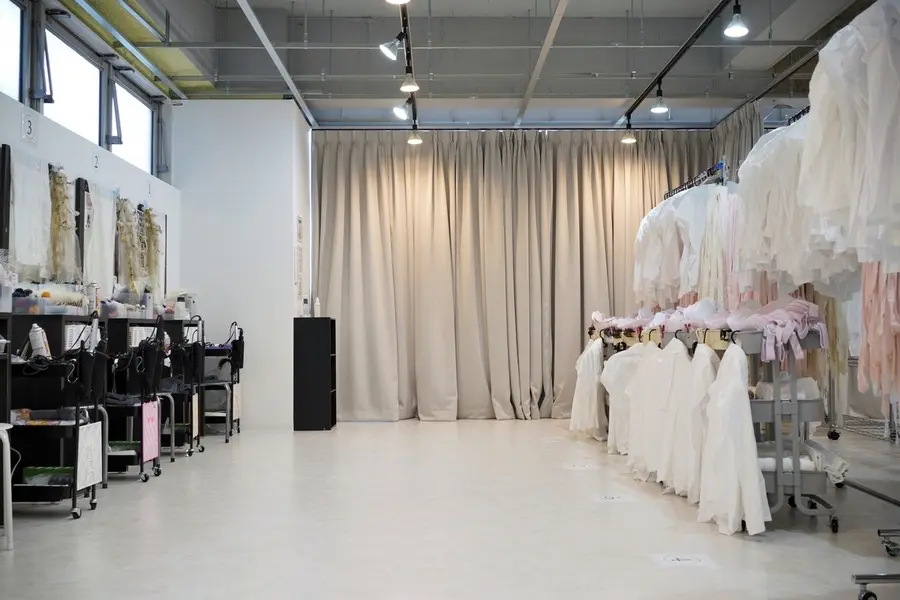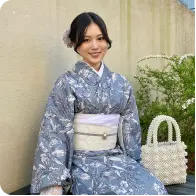How to Choose a Cute Kimono in Asakusa – Styling Tips for the Perfect Look
If you’re going to rent a kimono in Asakusa, you’ll want to wear it beautifully!
But you might think that coordinating a kimono, something you’re not used to wearing daily, seems a bit challenging, right?
Actually, recently, kimonos have become as stylish as Western clothing, making them easy to wear and stylish!
This time, aiming for a cute look, we’ve gathered tips on coordinating rental kimonos, including choosing kimono colors, patterns, and obi. Please take a look!
For more information on RikaWafuku Kimono Rental Asakusa store, click here
1. Start with Choosing Kimono Colors
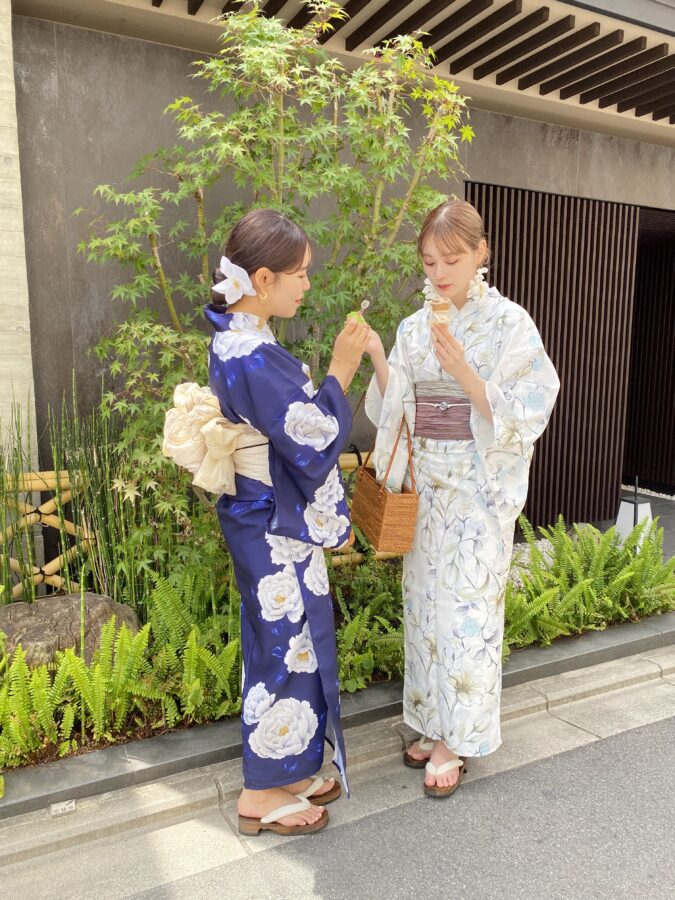
When renting a kimono, start with choosing the kimono color. Layer the colors of the juban (inner kimono), han-eri (half-collar), obi (sash), and accessories on top of the kimono color for a cohesive look, making you look beautiful in a kimono and Instagram-ready!
1.1. Know Your Personal Colors
Each person has colors that suit them based on their facial features, skin tone, eyes, and hair color.
Japanese skin tones can be broadly categorized into yellow and blue tones. Yellow-toned individuals have bright and cheerful charm, while blue-toned individuals give off a cool and stylish impression!
Let’s take a look at the kimono colors that suit each type:
– Spring Type
Bright yellowish skin tone. Typical Japanese facial features with bright eyes and lips.
→ Colors like sakura pink or canola yellow, which are bright and clear, will make you appear even more energetic, cheerful, youthful, and cute.
– Summer Type
Soft bluish skin tone. Brown eyes and soft hair colors.
→ Colors like hydrangea purple or light blue, which are light and soft, will create an elegant and refined cute impression.
– Autumn Type
Tawny yellowish skin tone. Darker eyes and matte hair colors.
→ Colors like autumnal red, mustard yellow, or brown, which are deep and glossy, will give you a mature and sophisticated cute impression.
– Winter Type
Vivid bluish skin tone. Distinct facial features, sharp eyes, and hair.
→ Colors like red, blue, navy, or pink, which are vivid and intense, will create a distinctively cute impression with sharpness.
Above the obi, the impression of your face will change entirely based on the color of the half-collar and the kimono. So, consider the colors that flatter your face!
Let’s choose a kimono color that makes your complexion look beautiful, healthy, and cute when you actually try on the kimono!
Variations in Kimono Patterns
In recent kimono rentals, kimono with pop-design patterns have become more popular.
Additionally, there are many cute kimonos that have creatively arranged traditional Japanese patterns, known as auspicious patterns (吉祥文様). Let’s introduce some recommended patterns!
Knowing the meaning behind patterns and motifs will make you a more stylish person!
Flowers
・Cherry Blossoms
Cherry blossoms, which announce the arrival of spring, symbolize “abundance” and “prosperity,” signifying the beginning of things.
・Peony
With its beautiful and large petals, the luxurious king of flowers, the peony, represents “happiness,” “nobility,” and “longevity” because the word for “peony” (牡丹) sounds like “not aging” (不老).
・Plum Blossoms
Enduring the harsh cold of winter, plum blossoms are known as part of the “Three Friends of Winter” together with bamboo and pine. They symbolize “patience” and are considered auspicious due to their red and white flowers.
Floral patterns are vibrant, cute, and exciting!
Other floral motifs often used in kimonos include camellias, irises, hydrangeas, and morning glories. Matching the season with your kimono rental enhances the feeling of experiencing all four seasons!
Plants
・Pine Tree
Pine trees, which withstand the harsh cold of winter while maintaining their beautiful green leaves, symbolize “longevity” and similar meanings.
・Arabesque (Karagokoro)
While the arabesque pattern is often associated with thieves, it actually symbolizes “prosperity” because it represents the entwining of vines and ivy, signifying growth and prosperity.
・Hemp Leaves (Asa-no-Ha)
The hexagonal geometric pattern of hemp leaves is used in kimono designs. Hemp grows quickly and straight, so it has been used in newborn baby clothes as a symbol of “healthy growth” and a charm against evil spirits.
Other plant motifs used as auspicious patterns include bamboo, bamboo grass, gourds, and eggplants.
Animals
・Turtle Shell (Kikkou)
Arranged in a regular hexagonal pattern resembling a turtle’s shell, this motif symbolizes “longevity” because turtles are known for their long lives.
・Crane (Tsuru)
Together with turtles, cranes symbolize “longevity.” Cranes are also believed to mate for life, representing “harmonious marriage” and are used in celebrations.
・Scales (Uroko)
A design of regular triangles representing scales. This auspicious pattern signifies “regeneration” and “warding off evil spirits.”
・Thousand Birds Grid (Chidori-Goushi)
The wordplay on “thousand birds” (千鳥) sounds like “achieving one’s goals” (千取り), making this pattern auspicious for “praying for victory” and “goal achievement.”
Additionally, sparrows, owls, dragonflies, raccoon dogs (tanuki), sea bream, and pufferfish are also commonly used as auspicious motifs.
Tools
・Shippo (Seven Treasures)
The seven treasures of Buddhism. Stacking circles of the same size represents “perfection” and is considered auspicious.
・Fan
A fan with a wide open end is often used as a motif for good luck.
・Bell (Suzu)
This pattern is used to call the gods at shrines and as a “charm against evil spirits” to ward off negativity.
Other auspicious motifs include a mallet, a treasure hoard, and musical instruments.
Other Patterns
・Arrow Feather (Yagasuri)
A design that arranges arrow feathers. Arrows, once released, do not return, so this pattern was favored as a good luck charm for brides.
・Checkered Pattern (Ichimatsu-Monyou)
A pattern of squares, also known as “cobblestones” (石畳). It gained popularity as “Ichimatsu pattern” because it was beloved by the famous Edo period Kabuki actor Sanogawa Ichimatsu, who used it for his hakama. The continuous design symbolizes “prosperity” and “development.”
・Diamond Shape (Hishigata)
The diamond shape resembles the aquatic plant “hishi,” known for its strong reproductive ability. It carries meanings such as “proliferation of descendants” and “good health.”
Other patterns like woven baskets (kagome), waves, saya-gata, and deer spots (kanoko) are also commonly used as auspicious patterns.
The Obi: Another Key Element
When renting a kimono, you’ll use a half-width obi, which is also used for yukata and is known for its various designs and convenient length.
Matching the kimono and obi in the same color creates a clean look, and if you prefer a different color, choosing an obi that complements the colors in the kimono pattern is a good idea.
Once you’ve decided on the kimono you want to wear for your rental, try on the obi you’re interested in!
5 Cute Obi Knots
You’d also like to tie your obi in a cute way to complement your kimono, right?
Here are some recommended cute obi knots!
At Rikawafuku Wafuku Asakusa, professional kimono dressers create cute obi knots that match the kimono and obi chosen by customers!
・Butterfly Knot (Chouchou Musubi)
A simple knot that creates a cute appearance reminiscent of a butterfly resting on the obi.
・Ribbon Knot (Ribbon Musubi)
An arrangement of the basic “Tateya Musubi” knot, featuring a large ribbon at the back. It is also known as “Ribbon Gaeshi” when used with yukata.
・Flower Knot (Hana Musubi)
An arrangement of the simple “Fukuro Musubi” knot commonly used for yukata. The obi’s ends are shortened and tripled to resemble flower petals.
・Patapata Knot (Patapata Musubi)
Simply tuck the excess obi fabric into the obi sash, creating a voluminous and lively appearance with numerous “feathers.” It’s a cute knot for girls.
・Balloon Taiko Knot (Fuurin Taiko Musubi)
An arrangement of the commonly used “Otaiko Musubi” knot in kimono. It looks like a paper balloon and is a cute obi knot.
Accessories That Complement Kimono Rentals
・Hair Ornaments
When renting a kimono, adding decorative hair ornaments like artificial flowers or tsumami-zaiku hairpins enhances the cuteness!
・Obi Brooch (Obi Dome)
A brooch-like accessory worn on top of the obi. These come in various designs, including fabric flowers and glamorous gemstone-studded options, providing a cute accent to your outfit!
・Basket Bag
Bags with woven designs that match kimonos are also becoming popular. They are perfect for carrying small items such as a mobile phone or wallet!
How did you like the idea of making your kimono rental look cute?
While choosing kimono colors, patterns, and obi may initially seem different from choosing Western clothing, you can have just as much fun coordinating your kimono rental as you would with regular outfits. Additionally, it’s a great idea to check out Instagram and other platforms for inspiration, such as your favorite coordinates or cute kimono styles from models!
Author of this article
Kimono rental Rikawafuku Asakusa store
(Operating company: TripFarm Co., Ltd.)
By 2023, more than 230,000 people will be wearing kimonos in a year
2-16-9 HULIC & New Kaminarimon 6F, Kaminarimon, Taito-ku, Tokyo 111-0034
3 minutes walk from Asakusa Station on the Tokyo Metro Ginza Line
1 minute walk to Kaminarimon
Click here for the website of our sister store, Kano-Wafuku(浅草の着物レンタル 花乃和服).


